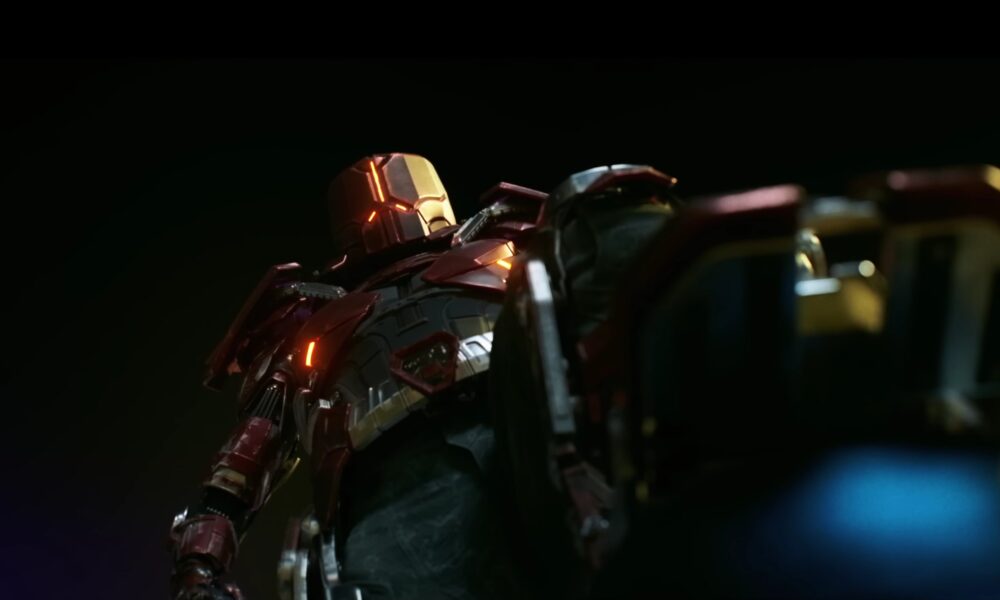The realm of superhero movies is often saturated with familiar tropes and archetypes. Yet, ‘Blue Beetle’ introduces a villain, Ignacio Carapax, who breaks the mold and ventures into territories that many films shy away from.
A Departure from the Norm
‘Blue Beetle’ presents a unique twist in the superhero narrative by introducing a villain with layers and depth not commonly seen in mainstream cinema. Carapax’s past relationship with American forces lends a richness to his character, distinguishing him from other antagonists molded in the likeness of Killmonger.

While the film industry has a penchant for rehashing successful formulas, there has been a noticeable surge in superhero movies showcasing adversaries with tragic and empathetic backstories. Characters deeply affected by systemic failures and societal injustices have become the new norm. Killmonger, portrayed by Michael B. Jordan in ‘Black Panther’, set a precedent for this new wave of antagonists, and many studios have tried to recreate this magic. Marvel’s Gorr from ‘Thor: Love and Thunder’ or Karli Morgenthau from ‘The Falcon and the Winter Soldier’ are a testament to this trend.
In ‘Blue Beetle’, Carapax is different from other villains. He’s not just following the usual trend. Even though he looks tough and was trained to fight by the U.S. government, the movie shows more of his feelings and thoughts. We get to see a side of him that makes us feel for him.
The Common Pitfall of Modern Superhero Villains
While ‘Black Panther; brilliantly delineated Killmonger’s motivations without making his dissent the sole cause of his villainy, many subsequent films missed the mark. Characters introduced in the vein of Killmonger often end up as one-dimensional figures, their valid concerns overshadowed by their violent tendencies.
For example, in ‘Thor: Love and Thunder’, they don’t handle Gorr’s anger towards the Gods very well. Instead of showing his deep reasons, they just make him very bad. When movies try to show characters with real-life problems but do it wrong, these characters just end up looking like simple bad guys. They become just a way to add action and drama, rather than being deep and real characters.
Carapax’s Unique Appeal in the ‘Blue Beetle’ Narrative
From the start of ‘Blue Beetle’, we can see Carapax has had a tough past, shown by his actual scars and his behavior. The director, Angel Manuel Soto, gives us a quick look into Carapax’s life, showing he’s not just a bodyguard but has a deeper story.
People hear a little about Carapax’s link to The School of the Americas and can guess that his rough behavior comes from outside forces, mainly from the U.S. This is different from other superhero movies, where bad guys’ histories are often ignored for more action scenes.
In a big showdown with Jaime Reyes, also known as the Blue Beetle, we see the best parts of Carapax’s character. This fight makes us think about the problems of wanting revenge too much. In most movies, people cheer when the bad guy is defeated. But in ‘Blue Beetle’, it’s different. Carapax chooses to give up his life to stop Victoria Kord’s bad plans, making him look like a hero in his own way
The Redemption Arc: A Rare Gem
In an industry where villains with tragic pasts often meet tragic ends, Carapax’s redemption is a breath of fresh air. His journey from being a pawn of external forces to seizing control of his destiny culminates in a selfless act, solidifying his place as one of the most memorable characters in superhero cinema. Unlike his contemporaries, Carapax’s narrative isn’t about vindication through violence but about reclaiming one’s agency.
By doing something different, ‘Blue Beetle’ gives viewers a special and touching moment. It changes our ideas about what makes a hero or a villain in today’s superhero movies.









No Comment! Be the first one.